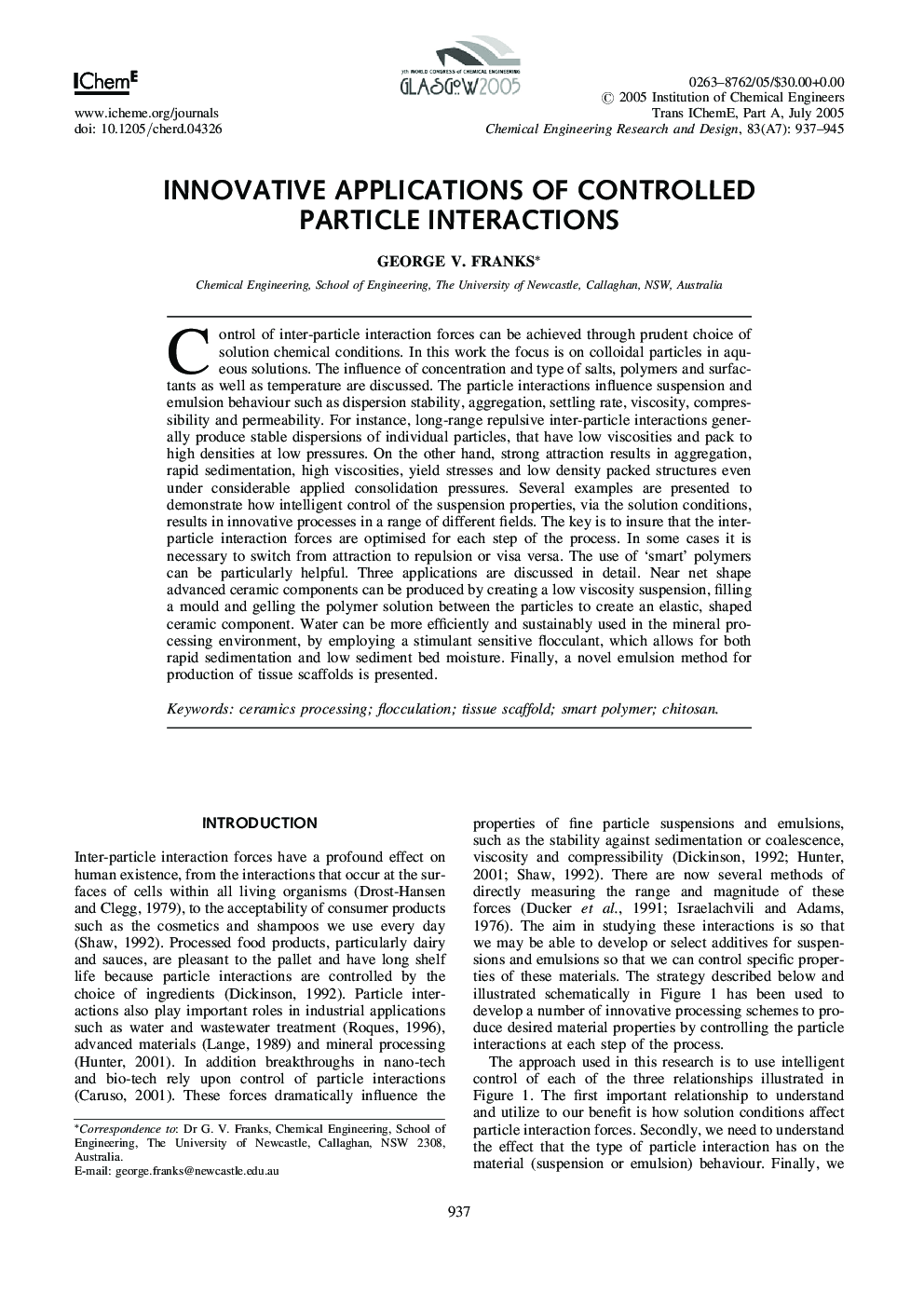| Article ID | Journal | Published Year | Pages | File Type |
|---|---|---|---|---|
| 10385226 | Chemical Engineering Research and Design | 2005 | 10 Pages |
Abstract
Control of inter-particle interaction forces can be achieved through prudent choice of solution chemical conditions. In this work the focus is on colloidal particles in aqueous solutions. The influence of concentration and type of salts, polymers and surfactants as well as temperature are discussed. The particle interactions influence suspension and emulsion behaviour such as dispersion stability, aggregation, settling rate, viscosity, compressibility and permeability. For instance, long-range repulsive inter-particle interactions generally produce stable dispersions of individual particles, that have low viscosities and pack to high densities at low pressures. On the other hand, strong attraction results in aggregation, rapid sedimentation, high viscosities, yield stresses and low density packed structures even under considerable applied consolidation pressures. Several examples are presented to demonstrate how intelligent control of the suspension properties, via the solution conditions, results in innovative processes in a range of different fields. The key is to insure that the inter-particle interaction forces are optimised for each step of the process. In some cases it is necessary to switch from attraction to repulsion or visa versa. The use of 'smart' polymers can be particularly helpful. Three applications are discussed in detail. Near net shape advanced ceramic components can be produced by creating a low viscosity suspension, filling a mould and gelling the polymer solution between the particles to create an elastic, shaped ceramic component. Water can be more efficiently and sustainably used in the mineral processing environment, by employing a stimulant sensitive flocculant, which allows for both rapid sedimentation and low sediment bed moisture. Finally, a novel emulsion method for production of tissue scaffolds is presented.
Related Topics
Physical Sciences and Engineering
Chemical Engineering
Filtration and Separation
Authors
George V. Franks,
